Affiliate links on Android Authority may earn us a commission. Learn more.
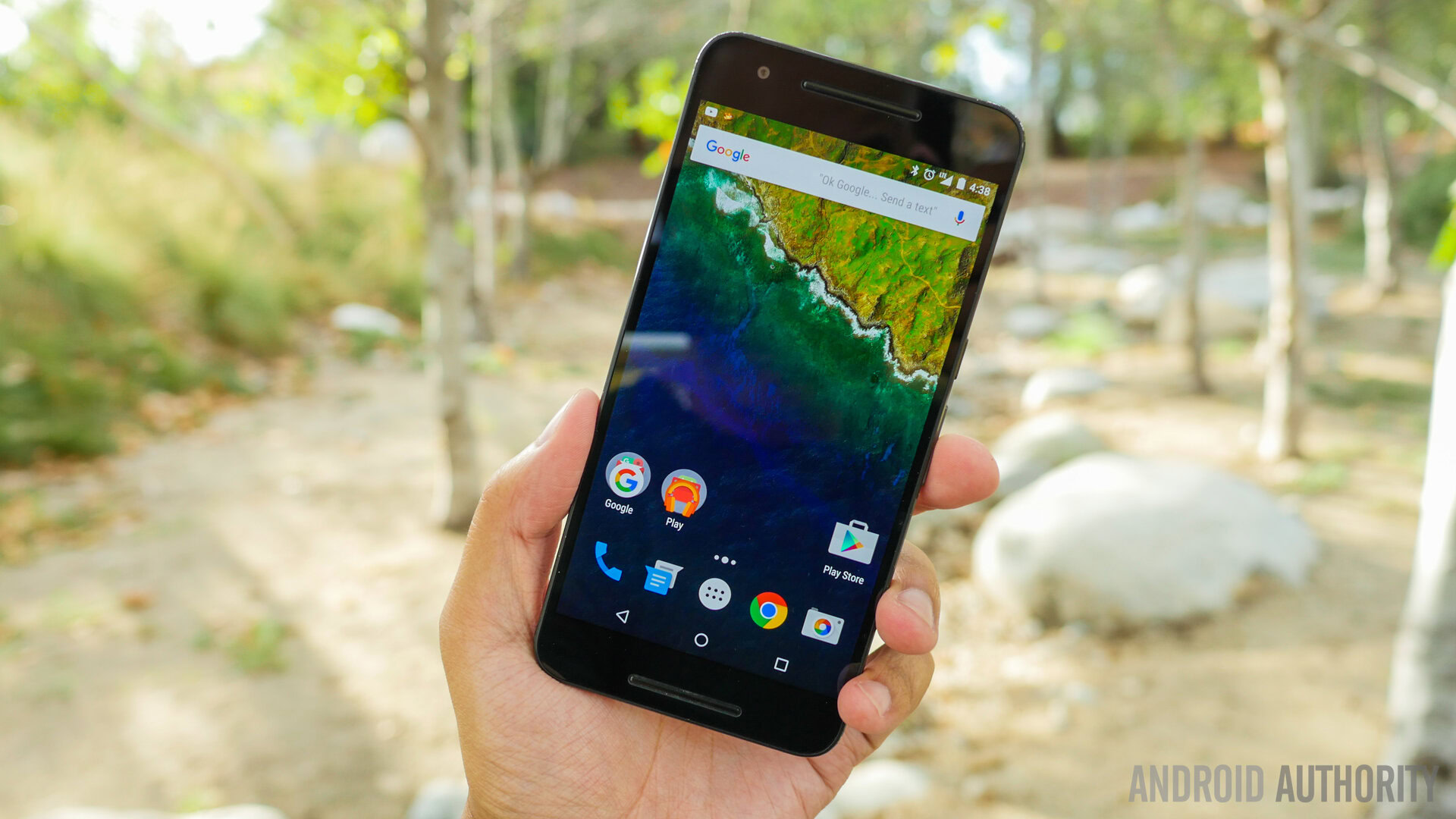
Nexus 6P review
January 10, 2016
Google Nexus 6P
What we like
What we don't like
Our scores
Google Nexus 6P
The Nexus line represents what Google views as the essential Android experience. But as good as they were, there have always been a few reasons why Nexus devices fell short of being considered the complete package. Be it a disappointing camera or lack of hardware features, each new Nexus, while highly anticipated and respected, would generally be just behind the flagships of any given year.
With the Nexus 6P, Google is hoping to continue what it started last year with the Nexus 6, by bringing to consumers a truly compelling high-end smartphone made to compete with current generation flagships. With a new partnership with HUAWEI in place, does Google manage to finally put all the pieces together? We find out, in this comprehensive Nexus 6P review!
Design
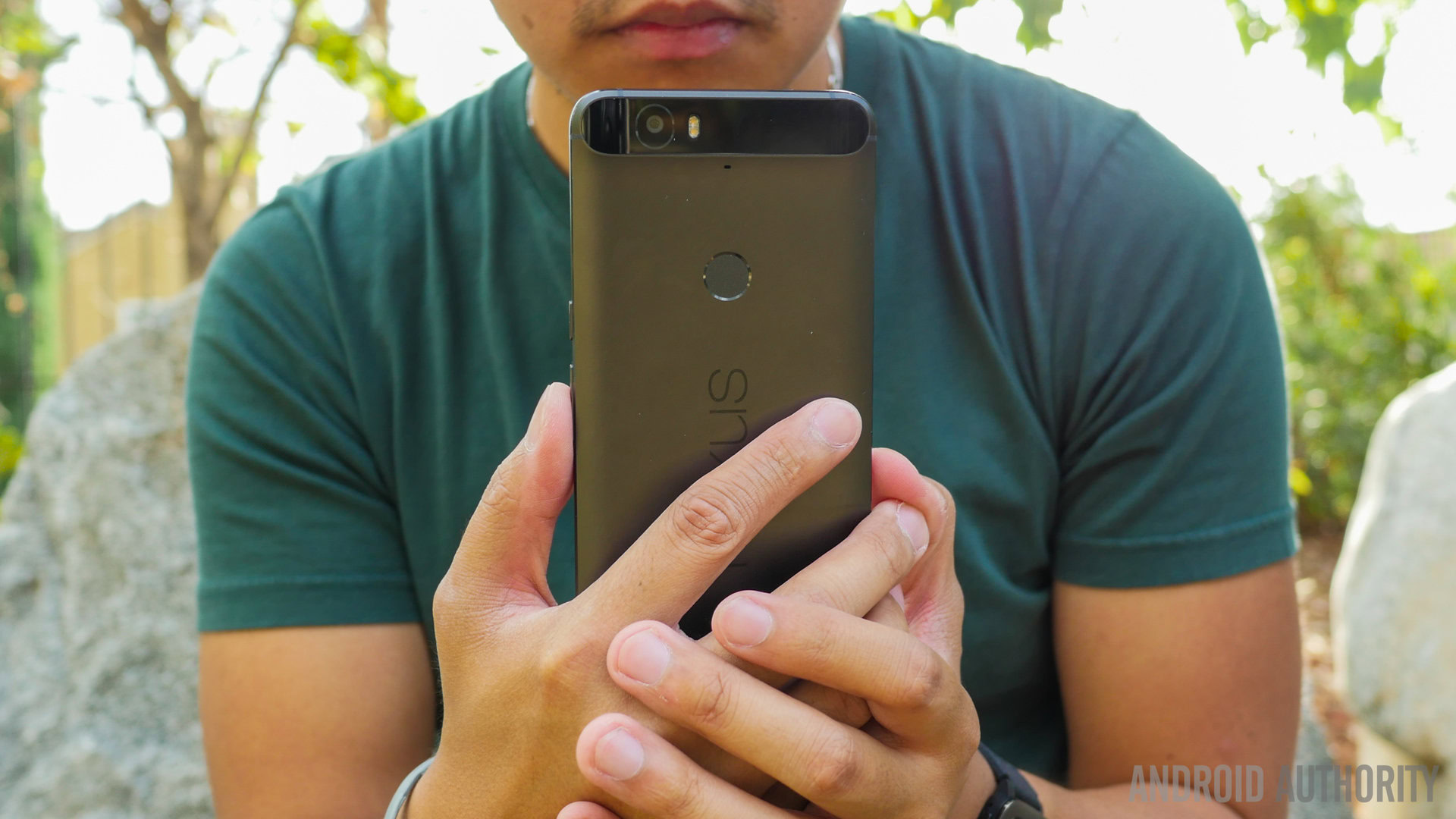
Design takes on a whole new outlook in the Nexus 6P. HUAWEI is at the helm of creating what might feel like the most premium Nexus device yet, with the device featuring a full metal unibody design with flat sides, which helps with the handling of this large smartphone.
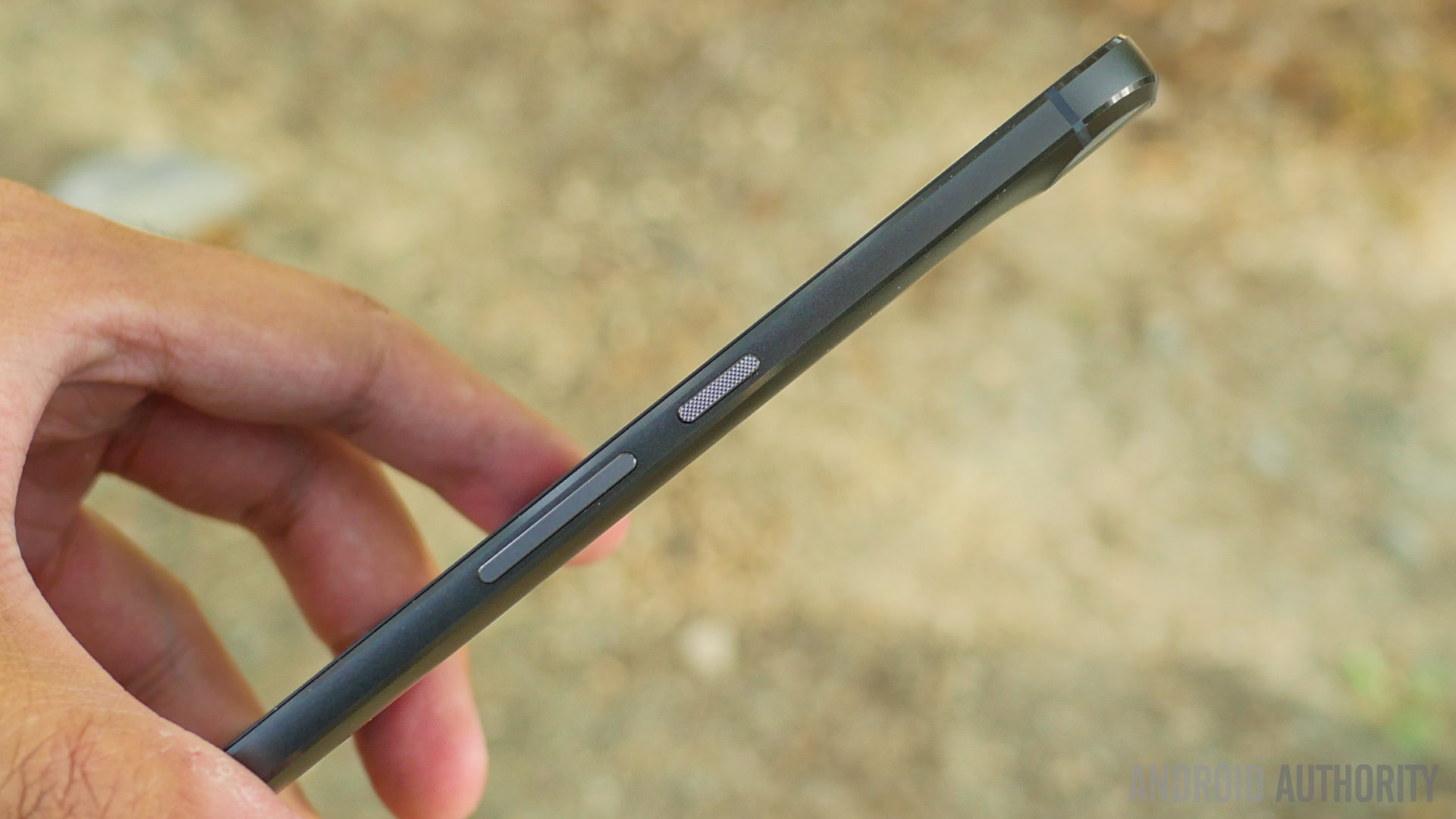
The buttons are all on the right side, and offer a solid tactile feedback when pressed, while the power button is textured, making it very easy to find. The headphone jack is up top, and at the bottom is the USB Type-C port. This port marks the start of a new ecosystem for everyone to get used to, but it is admittedly going to take some time for that to happen. The new cord is Type-C on both sides and fully reversible, and, as useful as that is, you will need to remember to take the cable with you when you’re away from home, as Type-C charging cables are still a rarity.
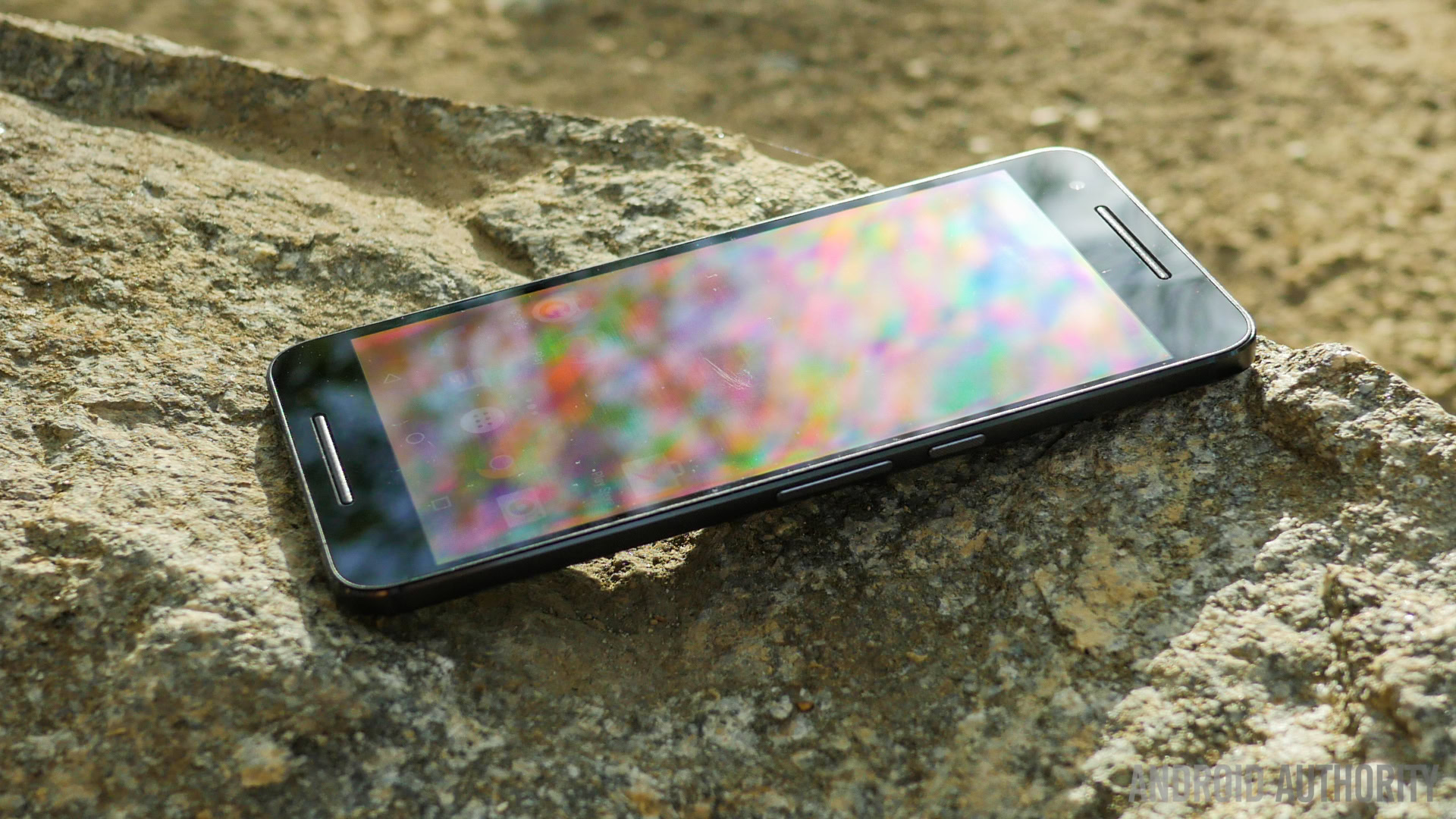
The 5.7-inch display dominates the front, and above and below it is the dual-front facing speaker setup, which is always a welcome addition. Turning over to the back brings us to the new hardware offerings, but also a couple of unique design aspects as well. As seen with the last few Nexus smartphones, the Nexus logo is oriented vertically. This time, the logo is painted right onto the metal back, instead of being an insert made of a plastic that can peel off in time.
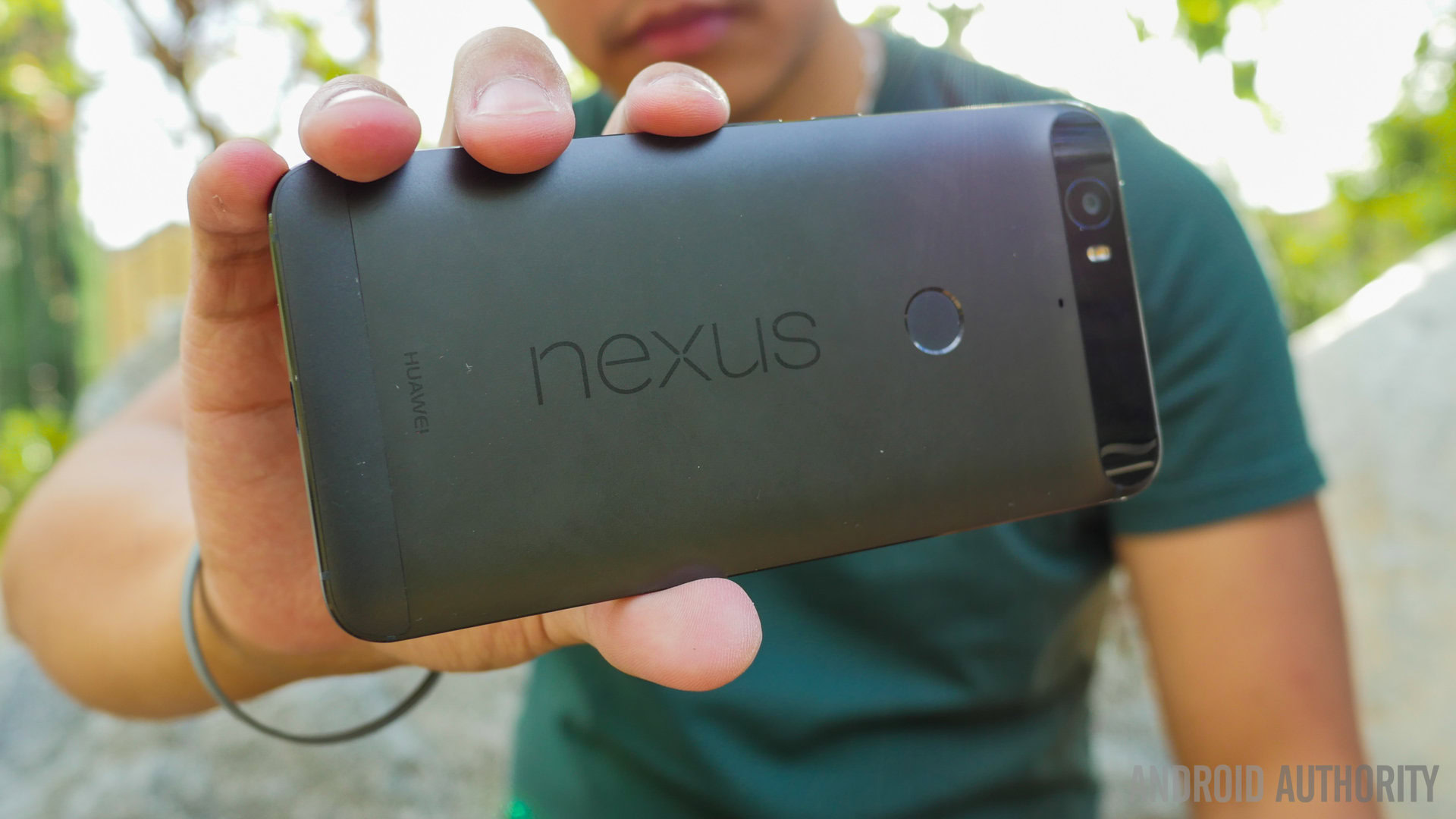
Above the logo is the new fingerprint scanner, lined by a shiny circle, and finally, there is the black bar up top, that houses the camera package, including the laser auto focus system and the flash. This bar might not have looked that great in the early product renders, but it does actually fit quite well as a new defining aesthetic for the premium Nexus phone. It does protrude however, albeit not by much.
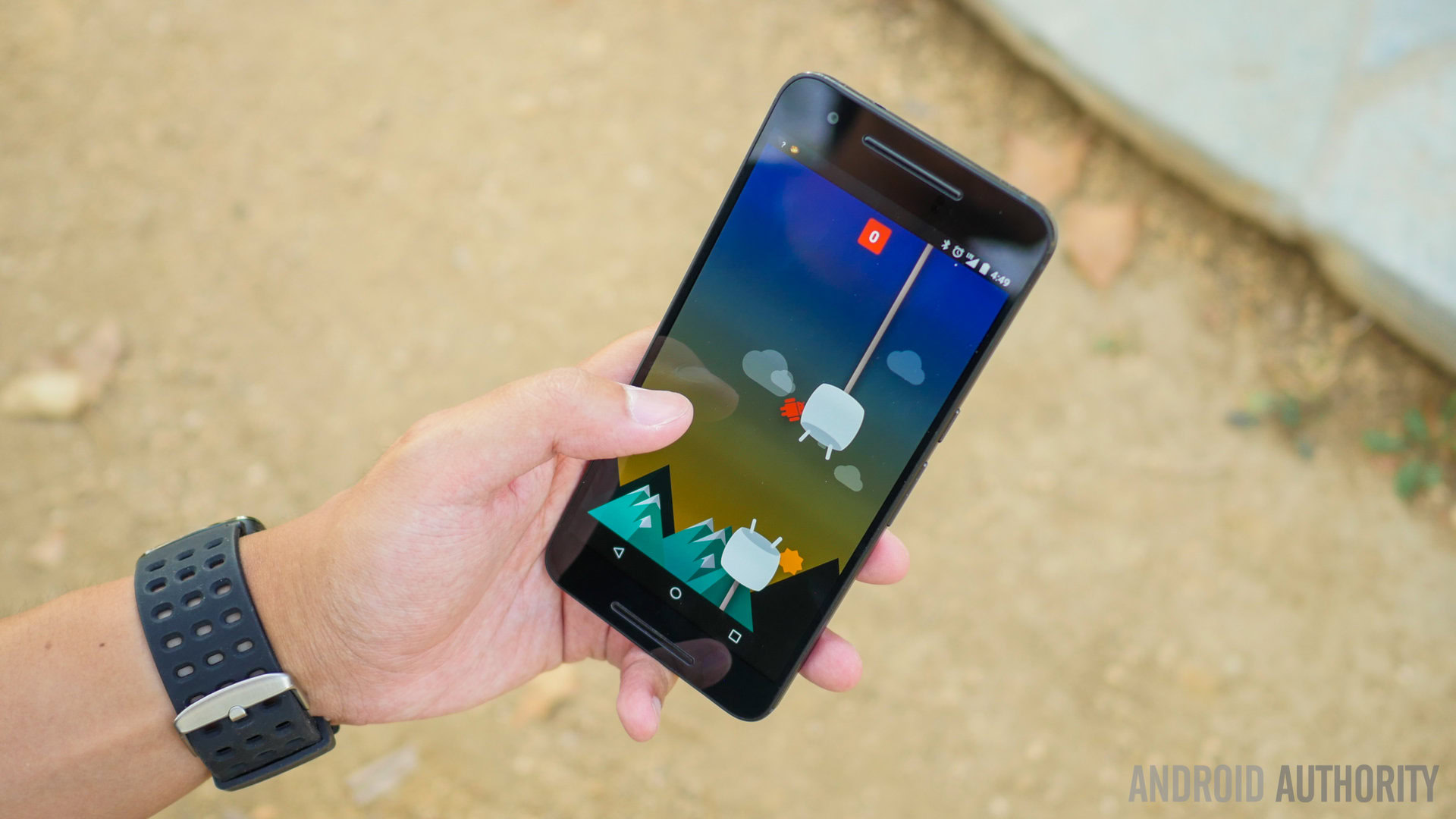
Metal plays a big role in how the the Nexus 6P looks and feels, but the inclusion of the last two features on the back are what really make this device stand out, with the Nexus logo, the fingerprint reader, and the black bar making for a very recognizable smartphone.
Another plus is that the handling experience is fantastic. The flat sides are easy to grip, the metal feels nice and cool in the hand, and the heft makes this phone exude feelings of high build quality.
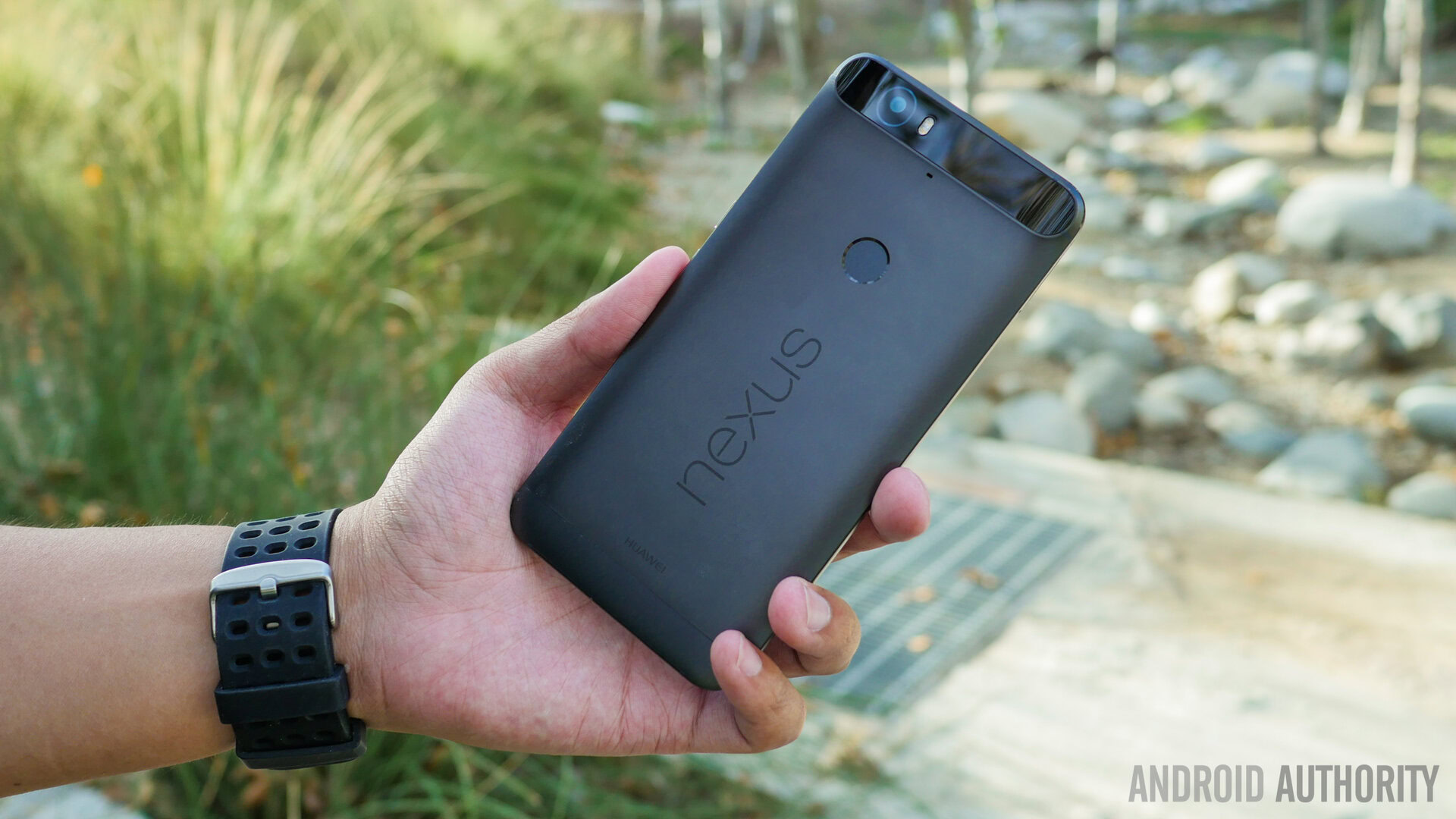
Though past Nexus smartphones have taken design cues from the manufacturer’s own offerings, HUAWEI benefits from a lesser known identity in the West, while of course, also designing a uniquely exquisite smartphone. Simply put, the Nexus 6P certainly lives up to the “premium” moniker.
Display

The Nexus 6P comes with a 5.7-inch AMOLED display with a 2560 x 1440 resolution, resulting in a pixel density of 518 ppi. Quad HD has become the mark of a high-end smartphone over the past year or so, and with the AMOLED construction bringing the higher color saturation levels, this display offers a very enjoyable viewing experience. Colors pop on this display, benefiting from the deep blacks that allow for a higher level of contrast. Sharpness is also impressive, as is the case with any Quad HD screen, and the display also gets plenty bright.
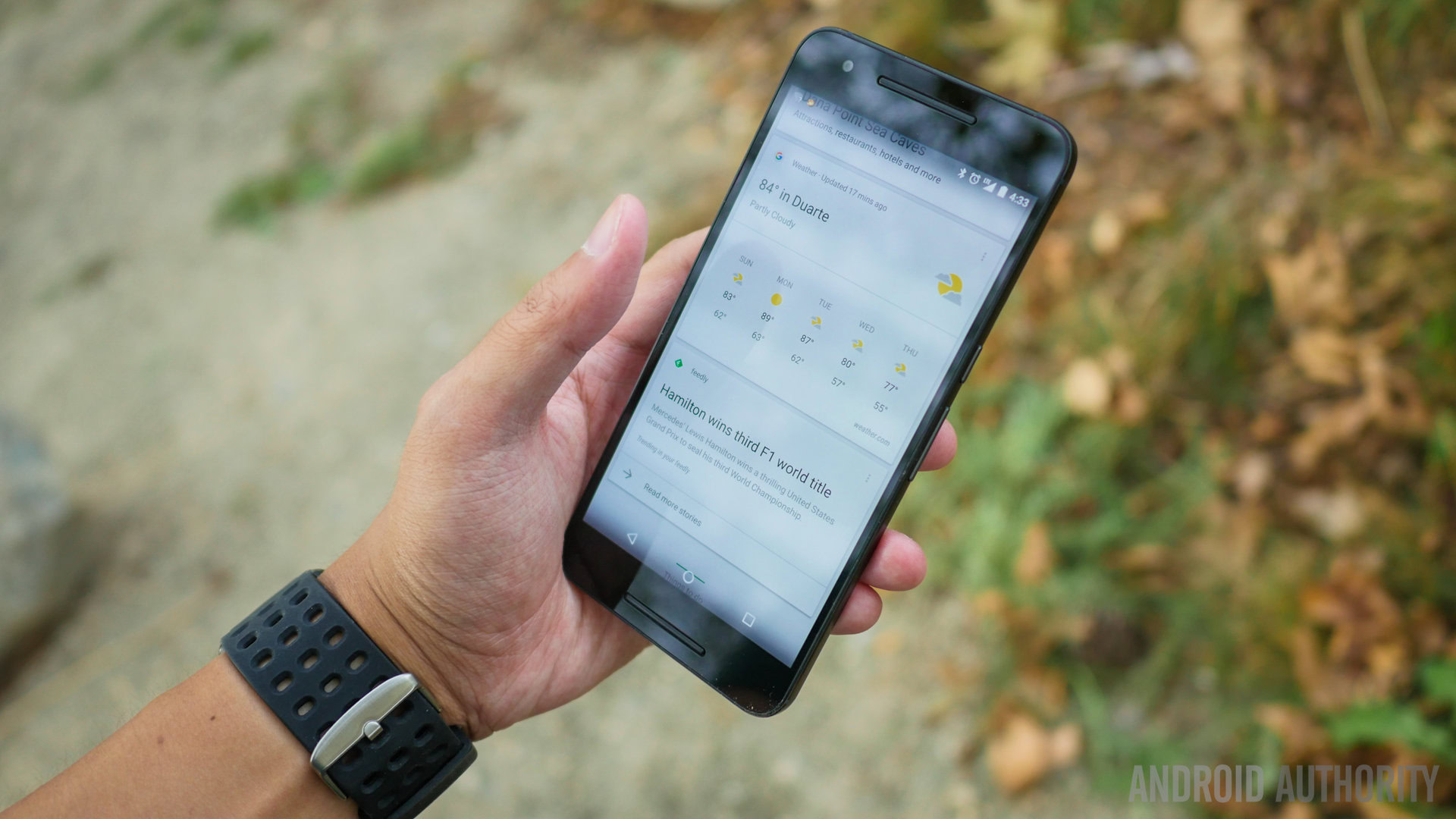
The only real problem we had with the display was when it came to using Ambient Display, which is meant to show a power saving overview of the notifications, but doesn’t trigger very easily. In fact, other than actually picking up the device, there is no other way of activating this otherwise nice feature, and some form of gesture controls would have certainly been useful here.
Performance
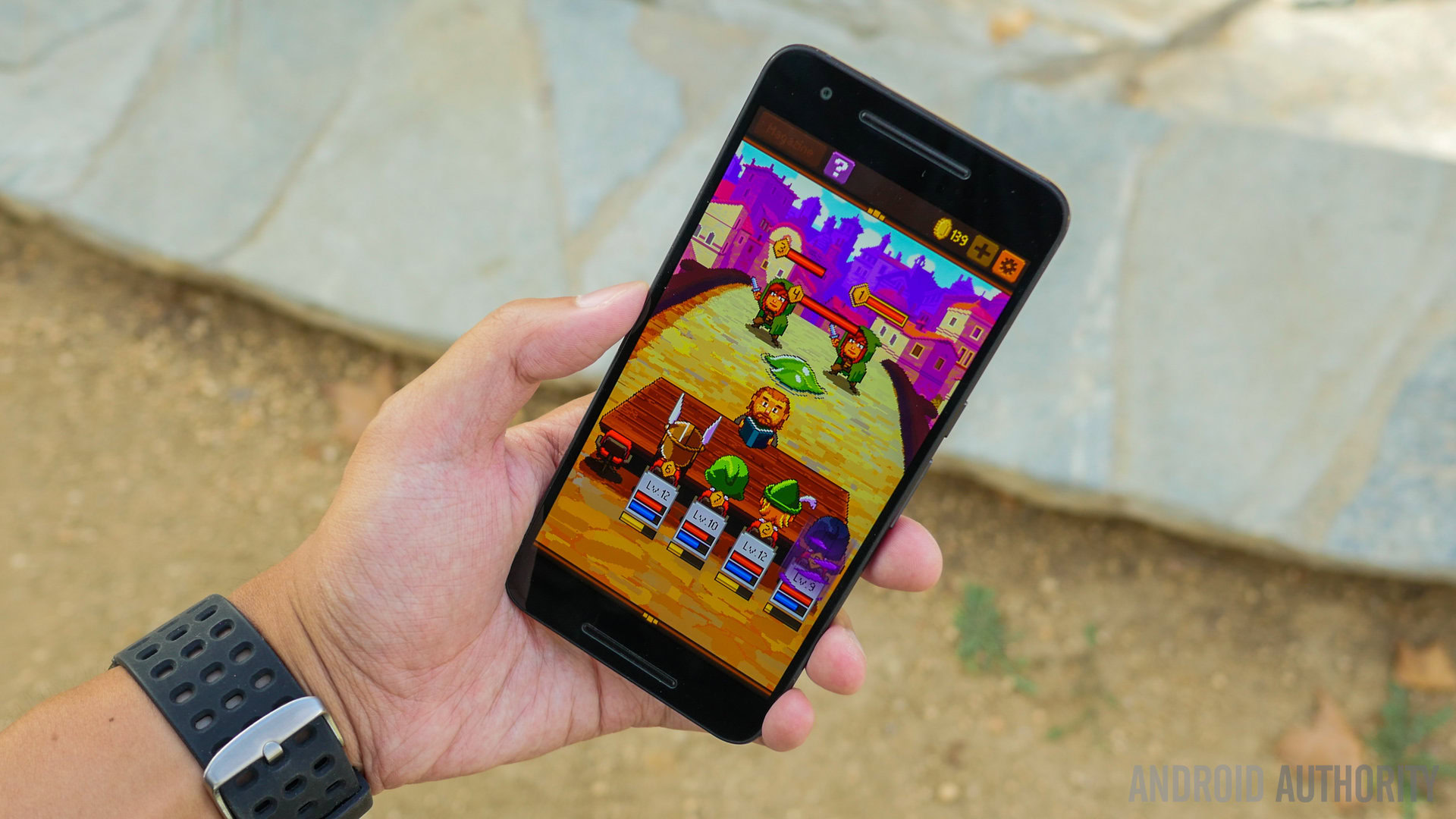
Under the hood, the Nexus 6P comes with an octa-core Qualcomm Snapdragon 810 processor, clocked at 2 GHz, and backed by the Adreno 430 GPU and 3 GB of RAM. This processing package remains the 2015 flagship standard, and the great experiences seen with the other high-end smartphones throughout the year is also found here. Of course, the pure Android software experience plays a big part in keeping things moving along swimmingly.
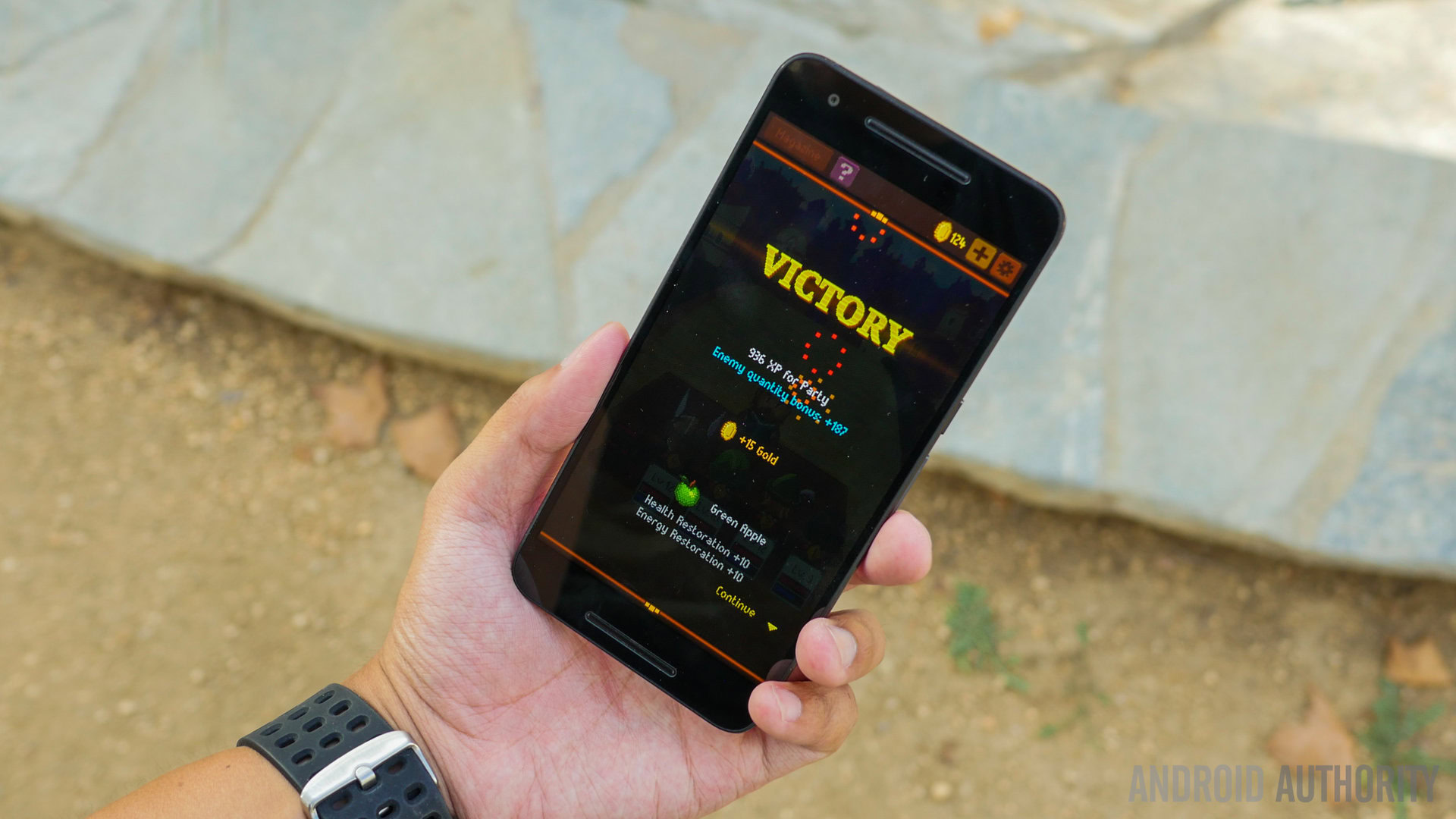
Moving through the homescreens, opening and closing applications, and multi-tasking have all been an absolute breeze. Gaming on this device has also been a treat, not only because of the processing package, but also because of the display and the dual front-facing speaker setup, that all contribute towards enhancing the overall experience. Once again, the Nexus proves that it isn’t just sheer power that allows for great performance, and that software optimizations are certainly needed to properly take advantage of the all the power that is available.
Hardware
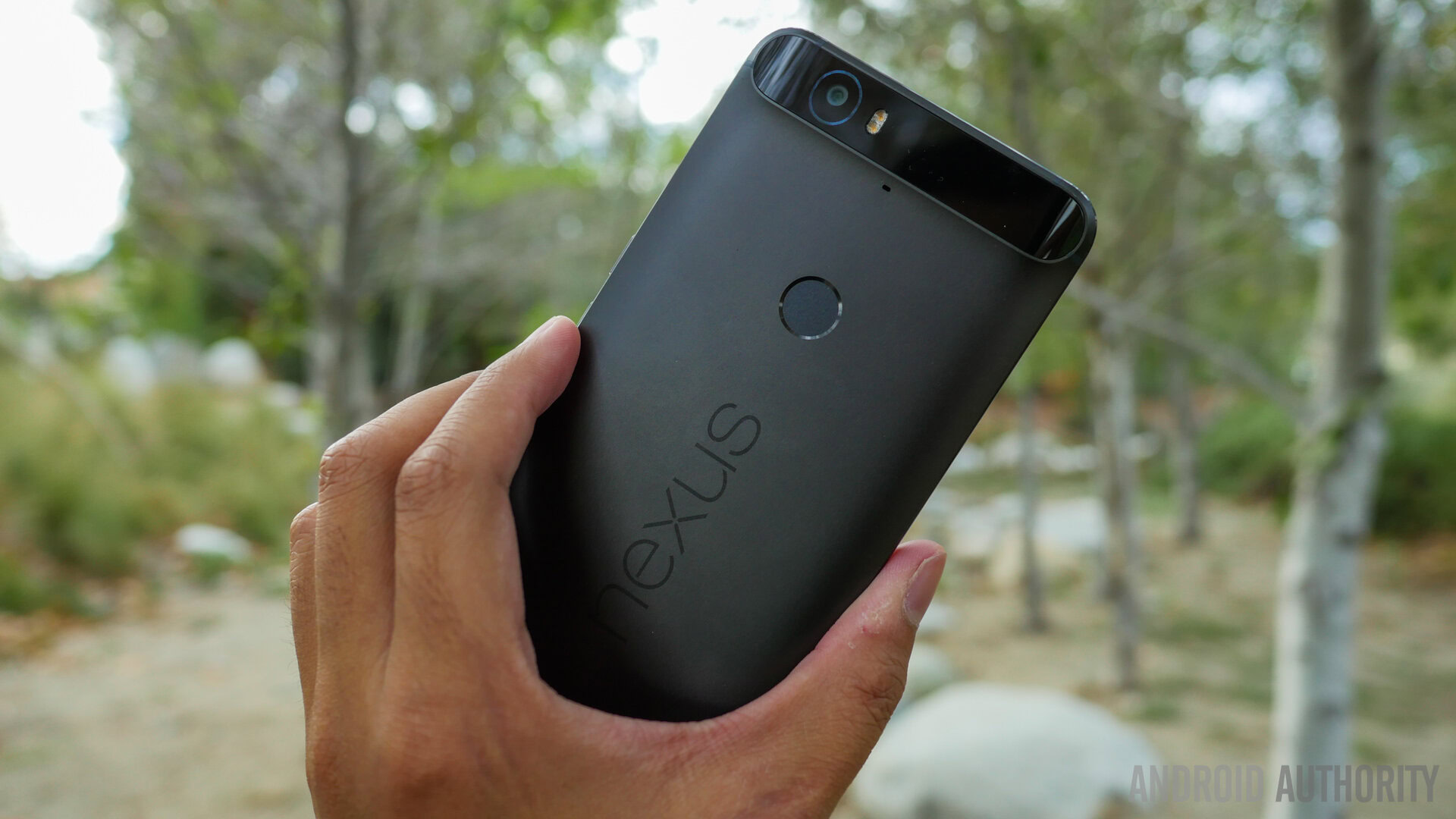
While Nexus smartphones have historically been quite bare-bones in terms of hardware, featuring just the essentials, there has been a shift in focus with the latest Nexus flagship, starting with the fingerprint scanner on the back.

Fingerprint reading is now an built-in feature of Android 6.0 Marshmallow, which Google calls Nexus Imprint, that is backed by HUAWEI’s pedigree of good fingerprint scanner iterations, which really shows with the Nexus 6P. The set up process is very simple, and using the scanner is even easier. All you need to do is rest the finger on the circular area on the back, and when the phone is off, it wakes up unlocked and ready to go, without even showing the lockscreen. Apart from letting you immediately replace patterns, passwords, and swipes as the unlock method, the fingerprint scanner can also be used in conjunction with Android Pay, for an additional layer of security when using the mobile payment system.
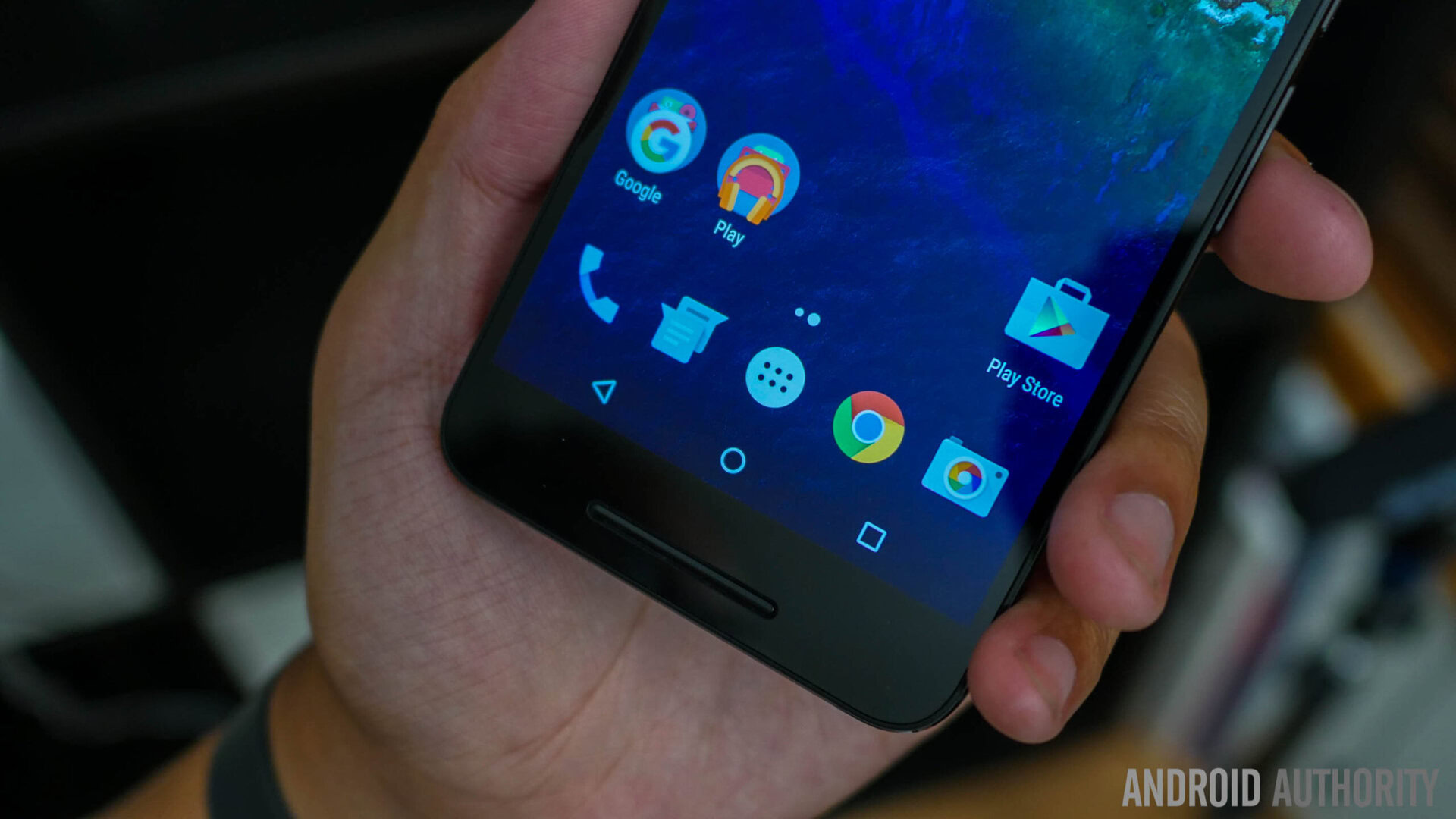
Moving to the front is where you will see the dual speaker setup, that provides a really good sound experience. They get pretty loud and provide a good amount of body to the sound, which is great, especially when compared to any of the bottom or rear-mounted speakers out there. As an alternative to using headphones when watching videos and playing games, these speakers have definitely been up to the task.
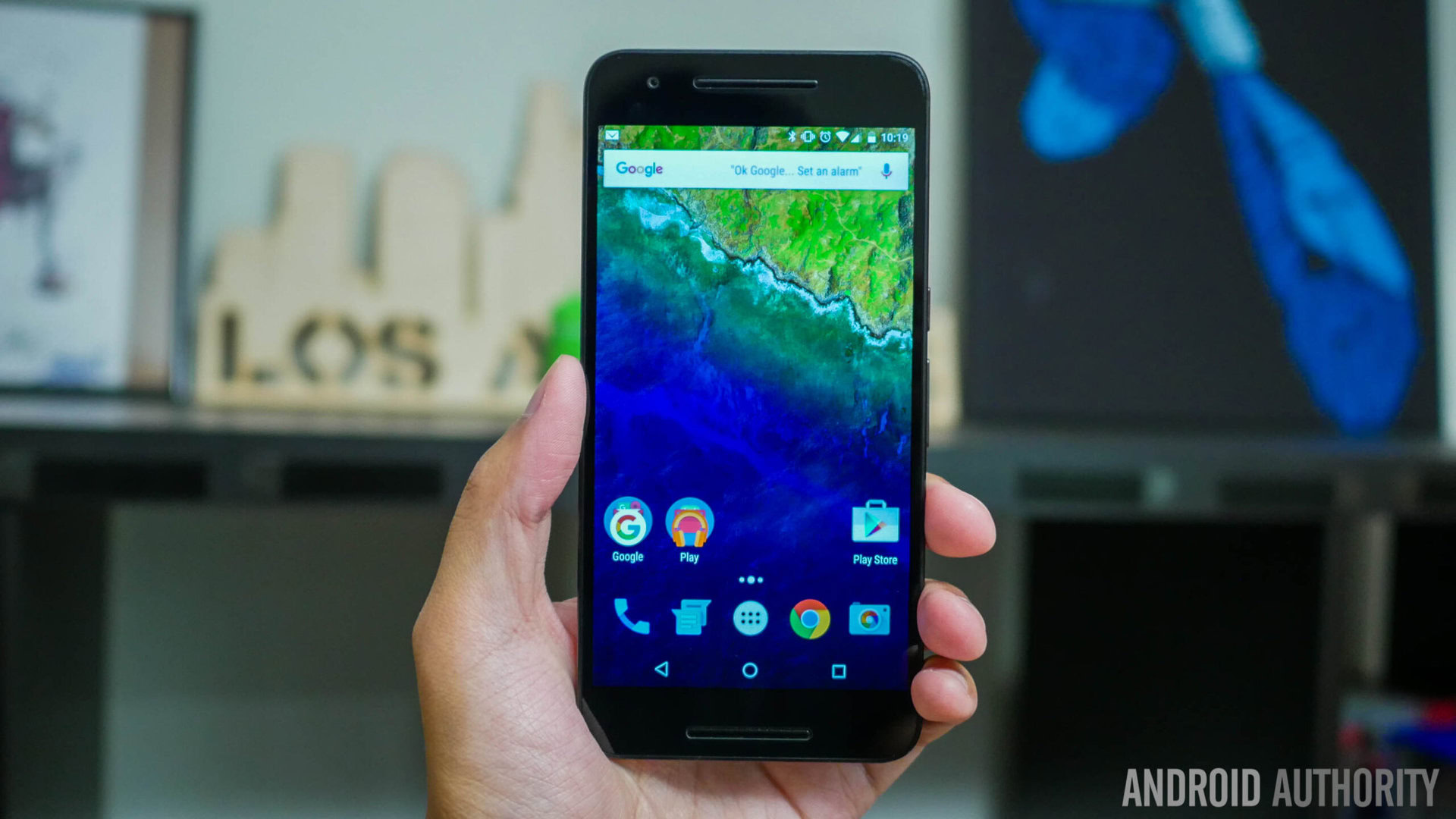
Phone call quality has been to the point, and we have used the phone on the T-Mobile and Google Fi networks without any issues. Speaking of network compatibility, the Nexus 6P is compatible with every major carrier in the US, making it a pretty easy choice as an unlocked offering.
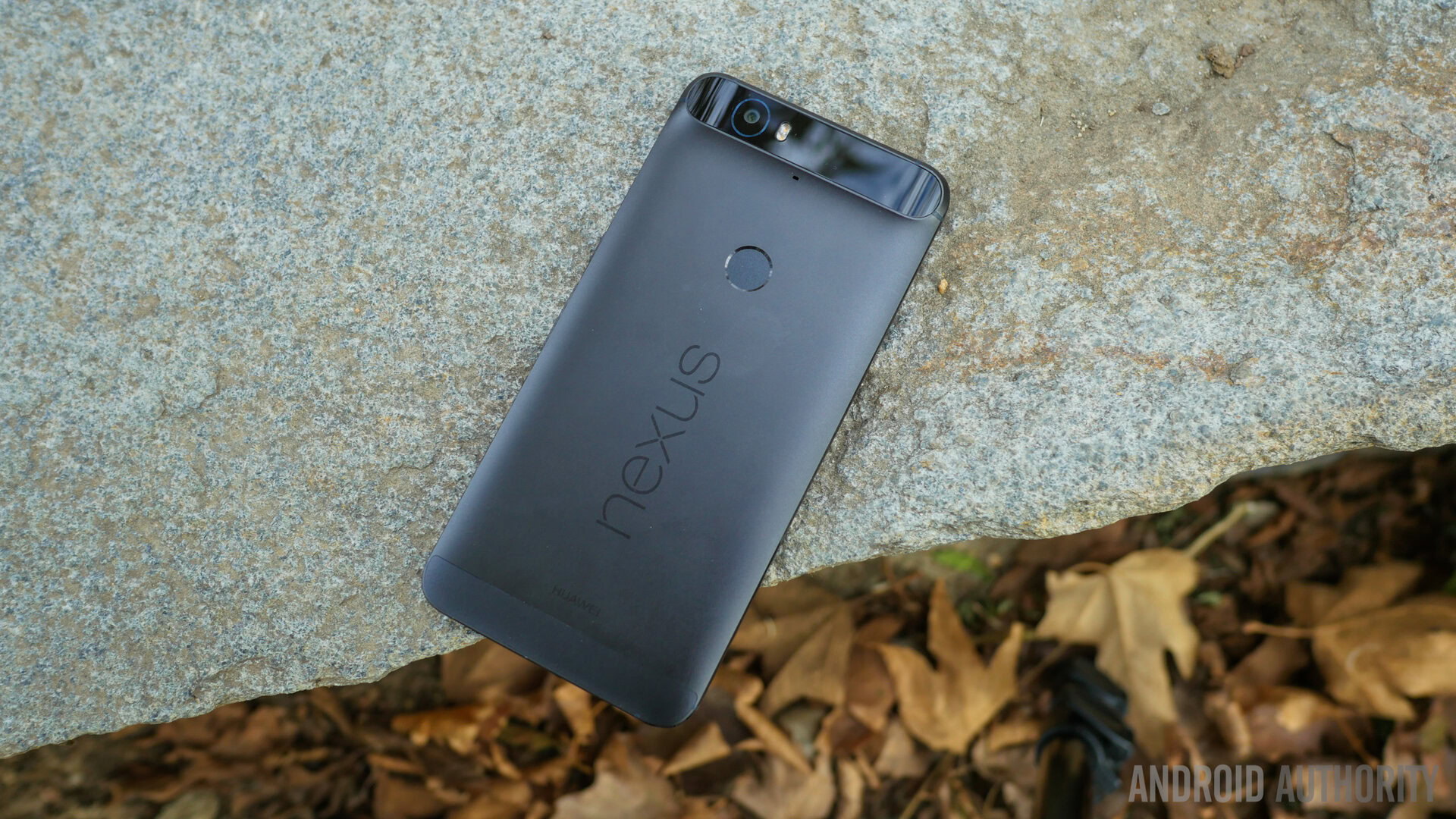
There is no expandable storage via microSD available here, but the 32 GB of in-built storage of the base model should be enough for most. Of course, 64 GB and 128 GB options are available as well for those who want it.
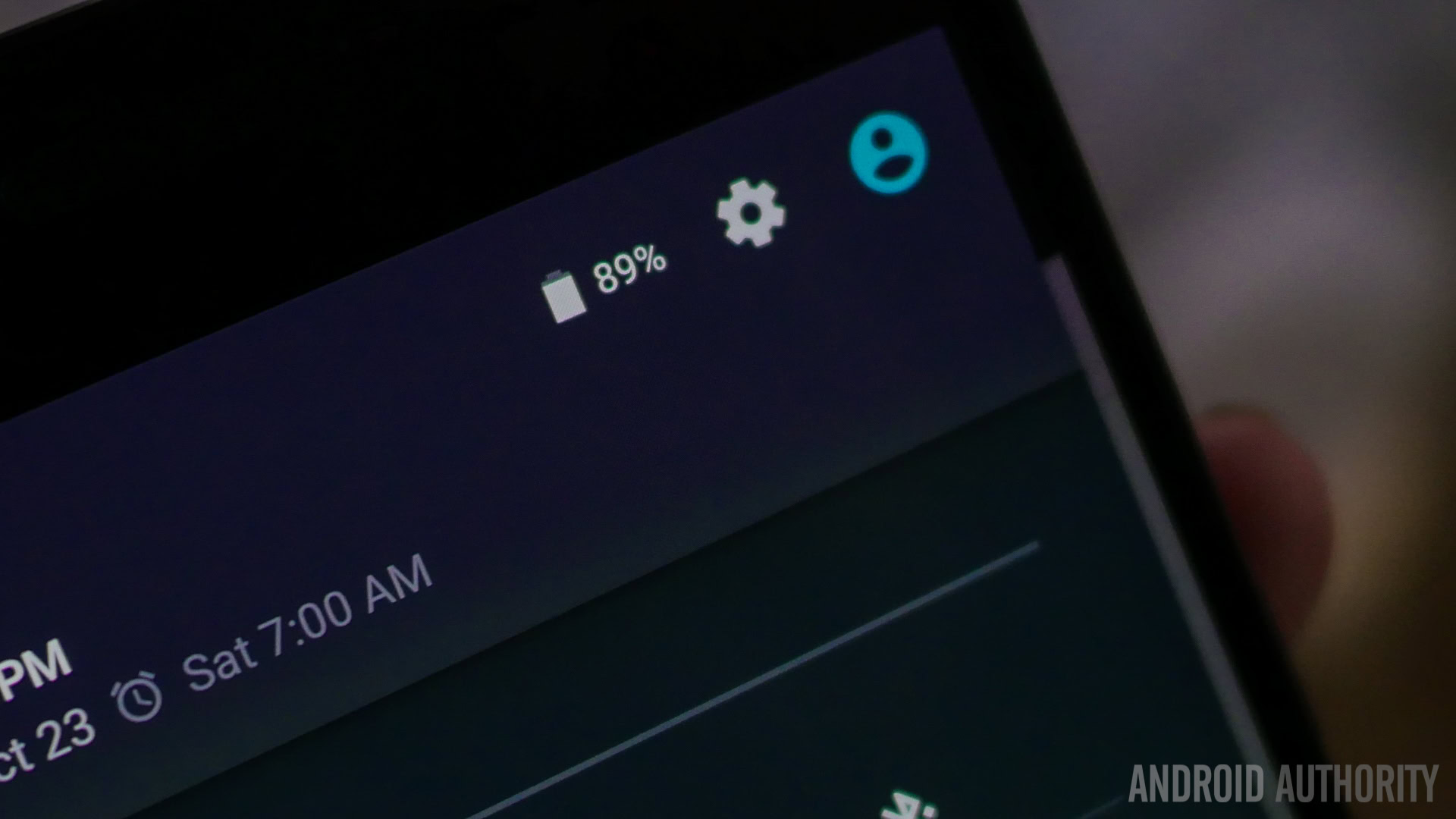
Battery gets a huge boost, not only because of the large 3,450 mAh unit that the device packs, but also courtesy of a new power saving feature introduced with Android 6.0 Marshmallow, called Doze. Doze relies on all of the different sensors to put applications in a deeper state of sleep than usual. The sensors need to be left alone and not be triggered at all, which essentially means leaving the phone untouched. It does seem to work quite well, and it kept the battery from draining almost at all when in standby. The basic message here is to abstain from habitually waking your device up if you want good battery life, but at least Doze is helping make that down time count.
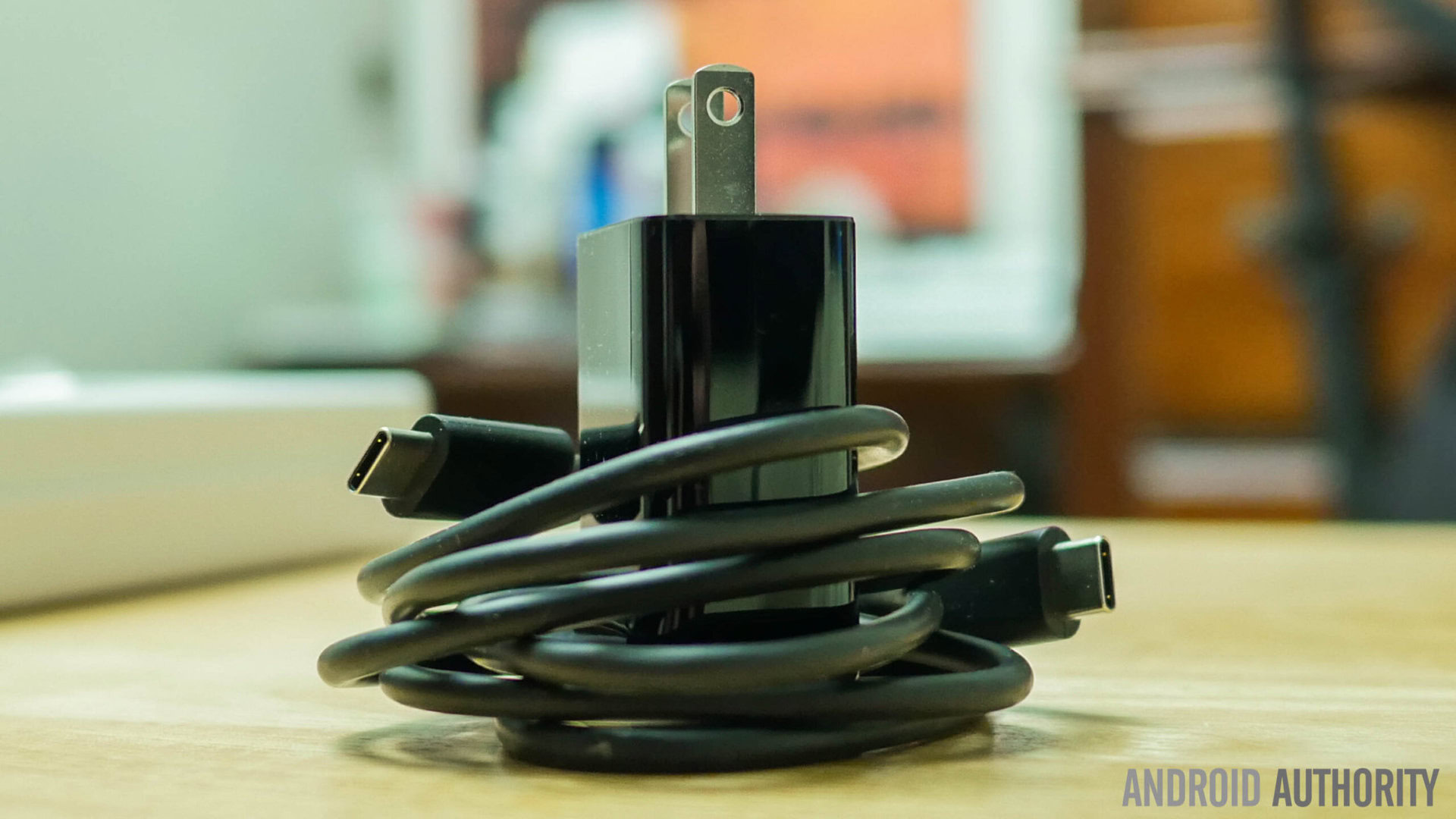
The large capacity of the battery is a big plus as well, allowing for an impressively long life. Though usage varies from user to user, but by leveraging Doze and doing less power intensive tasks, the Nexus 6P can go for two full days with moderate usage. When you do need the charge the device, USB Type-C makes this a very easy task. Granted, Qualcomm Quick Charge does go by the wayside here, but the higher power current Type-C still allows for a quick recharge, with the device battery going from 0 to 100 is under 90 minutes. Battery is probably one of the best parts of the Nexus 6P, because with all of the good this phone brings to the table, being able to enjoy it all for a long time is the icing on the cake.
Camera
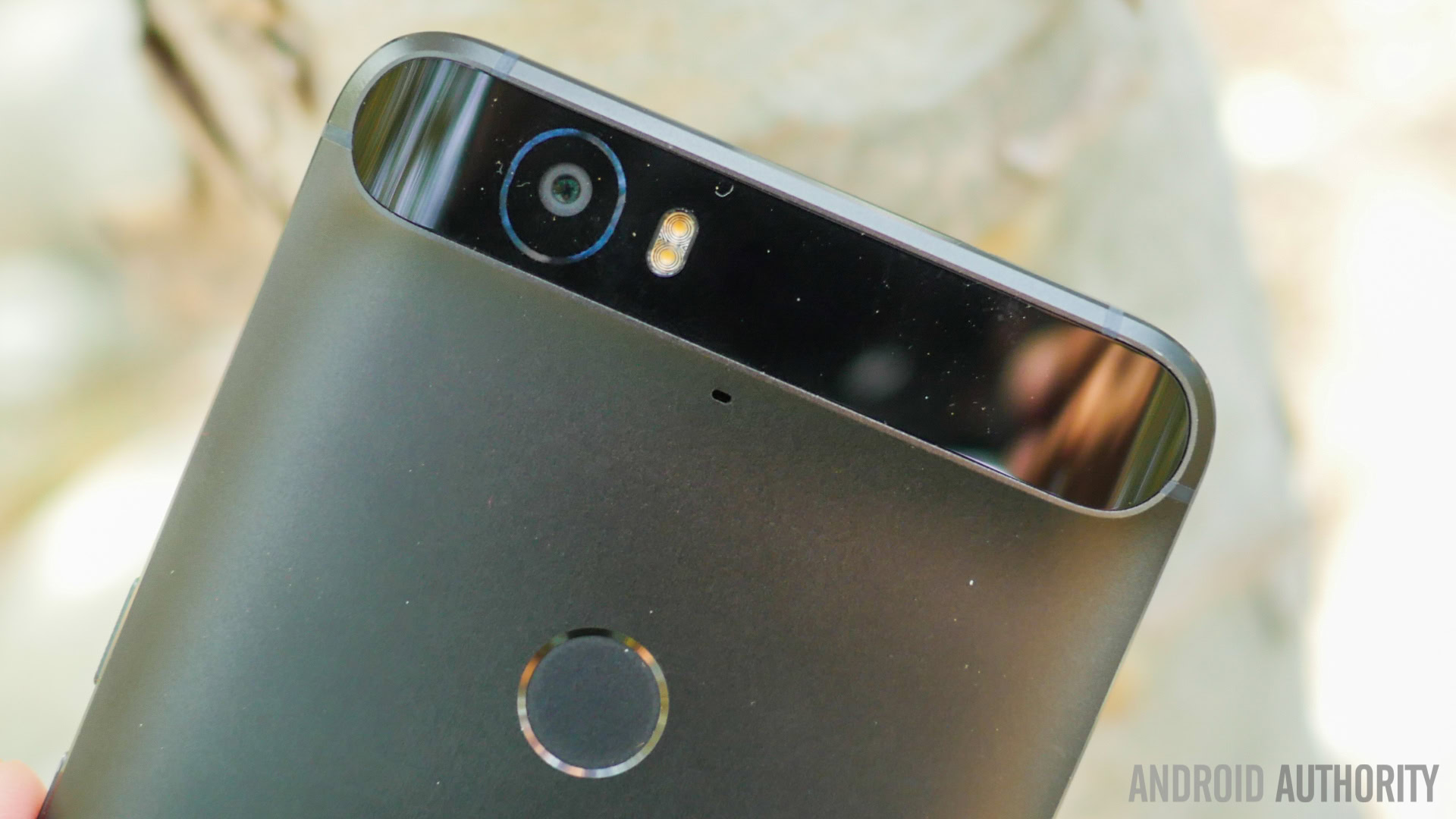
If there was one aspect where the Nexus line consistently fell short, it was in the camera department. This year, the Nexus 6P has to contend with what has been a pretty incredible year for smartphone cameras, and fortunately, the device has risen to the challenge.

A 12.3 MP rear shooter tries to allow for more light to enter than before, thanks to a 1.5 microns sensor, that may sound minuscule, but is bigger than the sensor found with the vast majority of Android smartphones today. Unfortunately, there is no optical image stabilization, but its absence is felt primarily when recording videos. The combination of fewer, but more effective pixels, and the overall large sensor size helps with light capture and thus allows for better low-light photography. But it’s not just low light performance that sees a big boost – the overall quality is also higher than before.
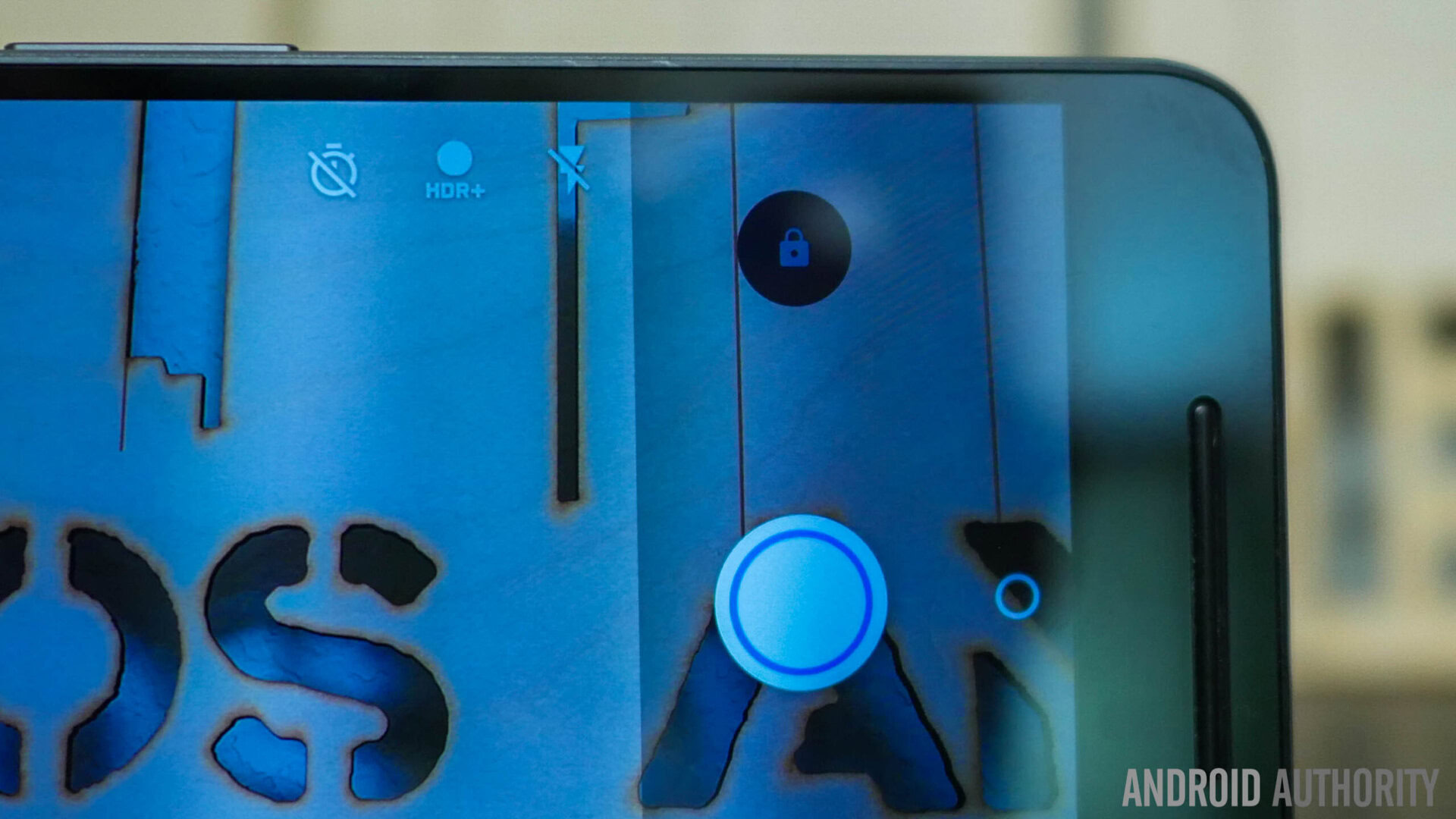
That said, the camera app is lacking when compared to much of the competition out there, mostly due to the lack of manual controls. It is a good automatic shooter, and fast, even when shooting in HDR+ mode, with the processing being done in the background in the Gallery app. Aside from a few extra modes like Panorama and Lens blur, there isn’t much else available with this camera app however. On the video side, 4K recording is available, and slow motion capture at 120 fps or 240 fps at a 720p resolution was a lot of fun as well.
Camera samples
Image quality is actually really great, with details captured very well, despite a small, yet noticeable, amount of noise reduction still at play here. Low light situations still require at least a little bit of light to differentiate the subject from the surroundings, but the enhancement here is that the subject is recognizable. Photos benefit from a subtle amount of saturation for nice and vivid colors, but the results are a little different when viewing the images on a screen other than the saturated AMOLED display of the phone.
100% crops
Panorama images were stitched together without too many problems, and HDR+ turned out quite a few good shots as well. HDR+ did strike us as a little moody however, as the highlights were crushed out in some shots, while the focus was on blowing up the shadows in others. Colors were given a much harder punch in every picture though.
HDR camera samples
Overall, we are really happy with the new Nexus camera. It’s much better than on previous iterations, and, more importantly, you no longer have to feel like you’re settling for this camera when compared to its competition.
Software

On the software side of things, Android 6.0 Marshmallow brings the crux of the Nexus experience, the latest and greatest of Android, with timely updates for the foreseeable future. Android has definitely come a long way, and Marshmallow is all about polish, rather than too many flashy new features.
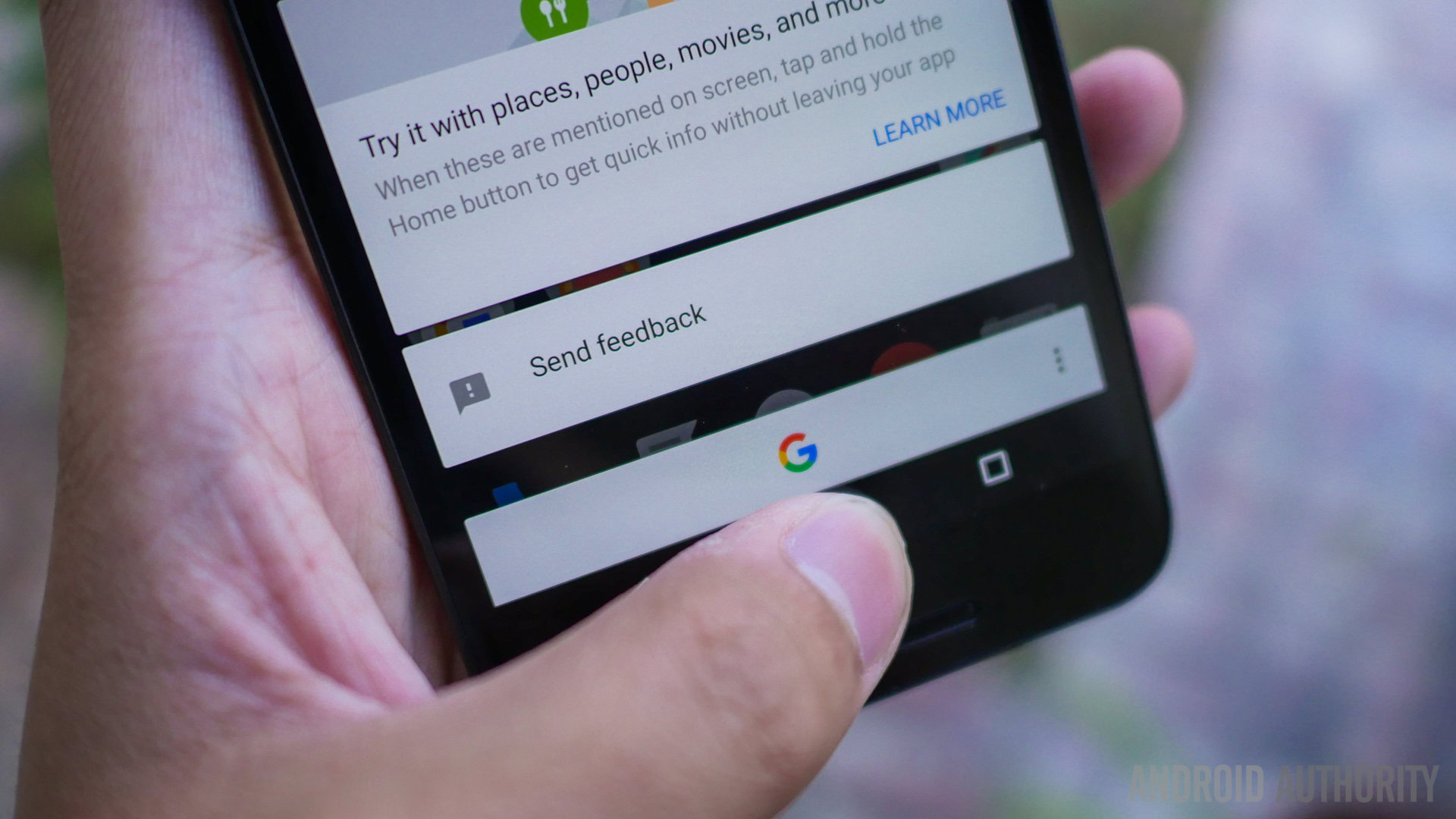
There are a few flashy features to be found of course, with one coming in the form of Google Now on Tap. While Google Now still resides beside the homescreens, it can now be used to search for anything that is currently displayed on the screen, by long pressing the home button. It basically requires text-based areas to pull information from, but the main gripe with the service is that it can be a bit hit and miss. After all, you cannot cherry pick exactly what information it pulls down, so if there aren’t any instantly recognizable Google search terms present, there likely won’t be anything on tap. It is a great feature when it works though, and we are definitely looking forward to seeing how it develops over time.
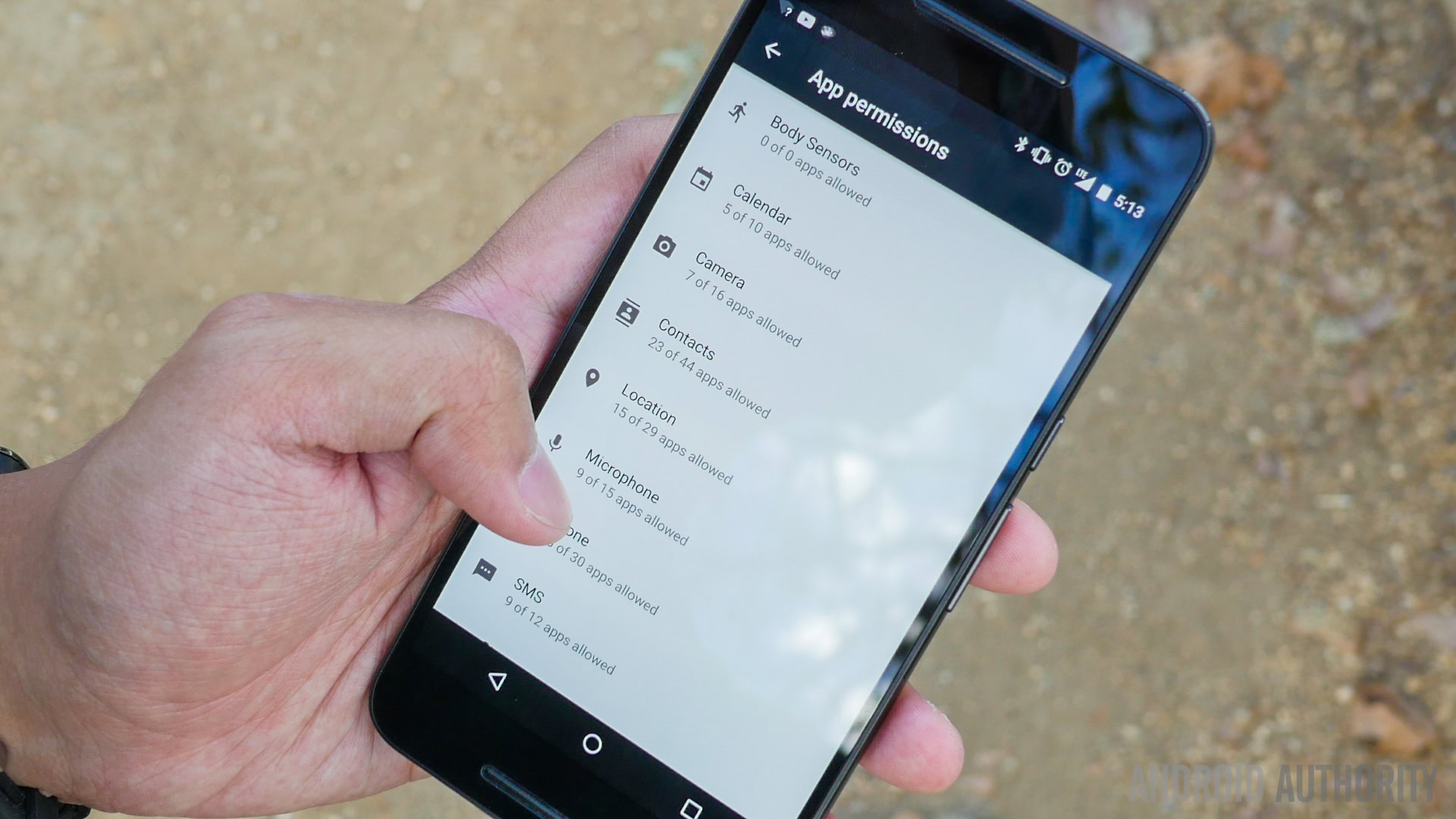
Other features are less flashy but just as important, such as Doze. The application drawer has also been given a new look, now being a vertical scrolling list. A line at the top houses the four most used applications, which is a nice touch, and there is also a search bar to help you quickly find any application. Finally, there is now a better way of checking and setting up App Permissions, which can all be done from the Settings menu. Further, Android asks if you want an app to access a particular function when the app tries to access it for the first time. For anyone who is a bit apprehensive about security on Android, the full control now available to you might bring a little peace of mind.
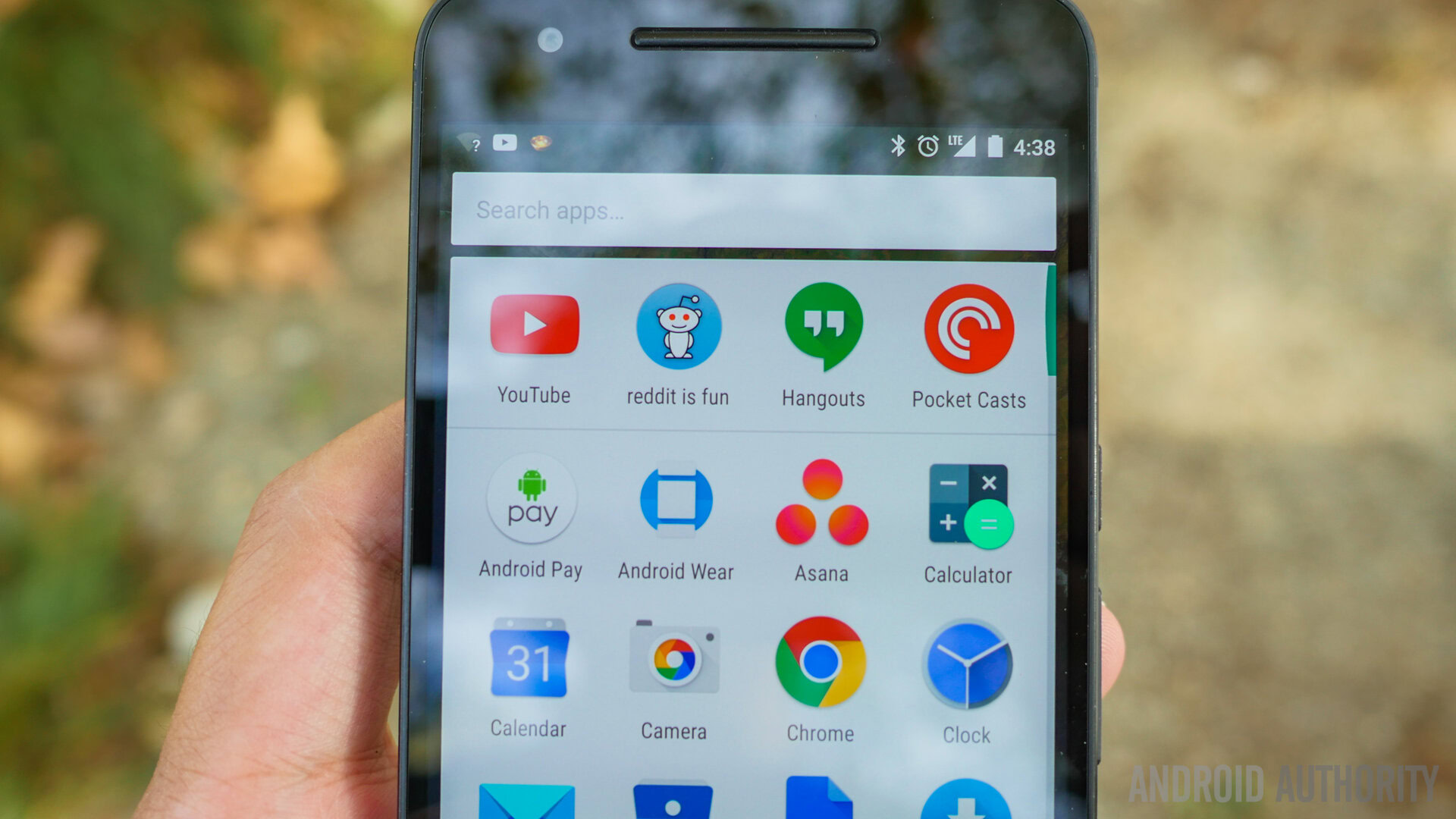
Of course, the main reason to get a Nexus device is to get the latest and most optimized version of Android that is available, and that is exactly what you get here. Small tweaks to the animations make Android feel that much smoother, and the overall experience is really impressively snappy. There is also the advantage of timely updates, which is always a big plus.
Specifications
| Display | 5.7-inch AMOLED display 2560 x 1440 resolution, 518ppi |
|---|---|
Processor | 2 GHz octa-core Qualcomm Snapdragon 810 processor Adreno 430 GPU |
RAM | 3 GB |
Storage | 32/64/128 GB not expandable |
Networks | GSM 850/1900 W-CDMA 2/4/5 CDMA 0/1/10 LTE Band 2/4/5/7/12/13/17/25/26/41 |
Software | Android 6.0 Marshmallow |
Fingerprint scanner | Yes |
Camera | 12.3MP rear-facing camera 8MP front-facing camera |
Battery | Non-removable 3450 mAh |
Dimensions | 159.4 x 77.8 x 7.3mm, 178g |
Gallery
Pricing and final thoughts
The Nexus 6P is priced starting at $499, which may be less than the price of typical flagships, but is still definitely a premium price for the Nexus series. A great experience in a properly premium body means that this device is definitely worth it.
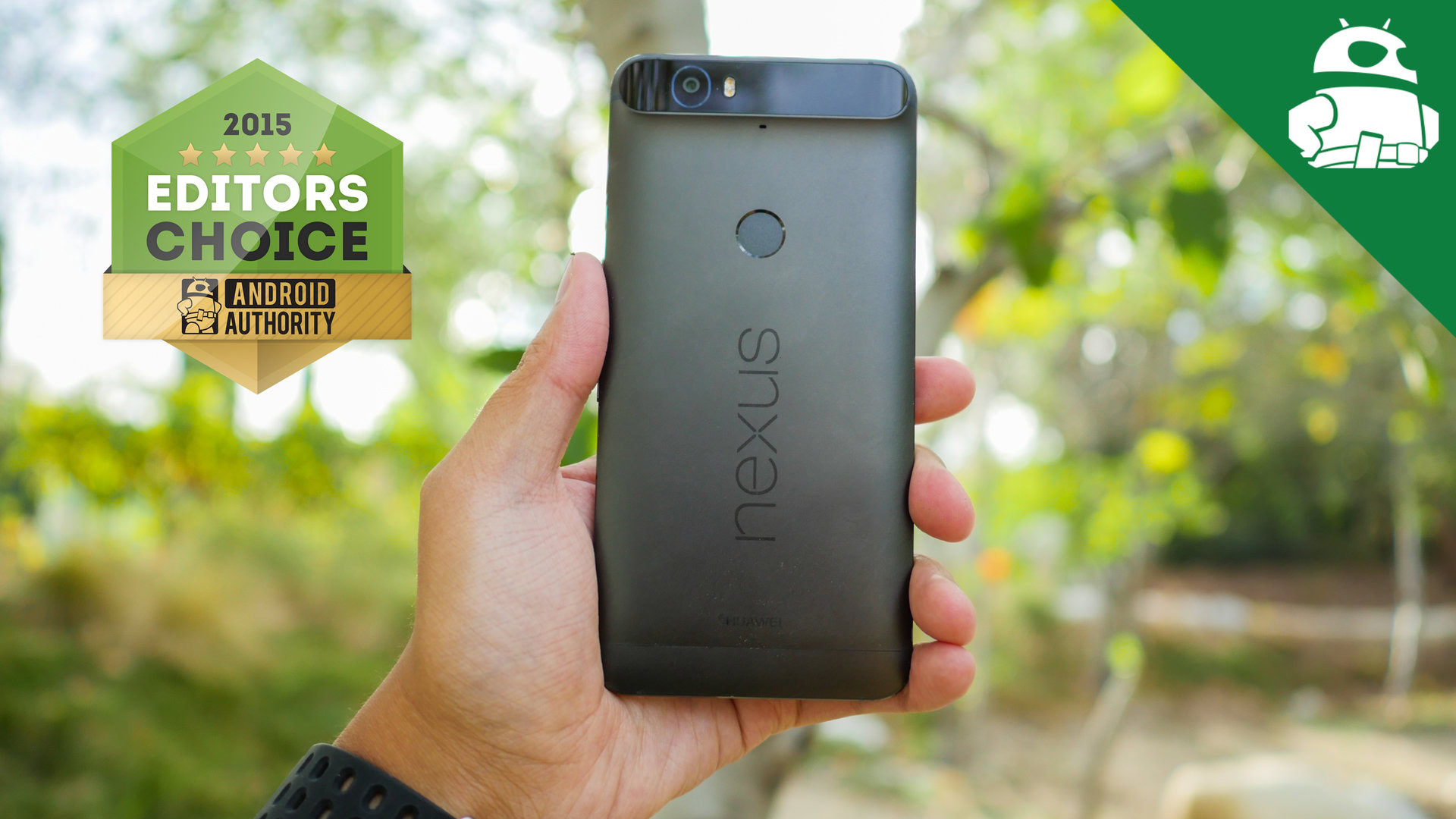
So there you have it for this in-depth look at the Nexus 6P! Some people might scoff at the price, especially those who still consider the Nexus line to be an affordable series that brings with it essential Android experiences. Last year’s Nexus 6 bucked that trend, and the Nexus 6P continues it by truly looking and feeling high-end, while offering a premium experience under the hood, including a camera that finally does justice to the flagship line. If you do want Android in its purest state, either of the two 2015 Nexus smartphones will do, but when looking for a high-end experience, the Nexus 6P takes the crown. As an Android phone that is capable of satisfying just about anyone, the Nexus 6P is definitely worthy of your consideration.
Thank you for being part of our community. Read our Comment Policy before posting.